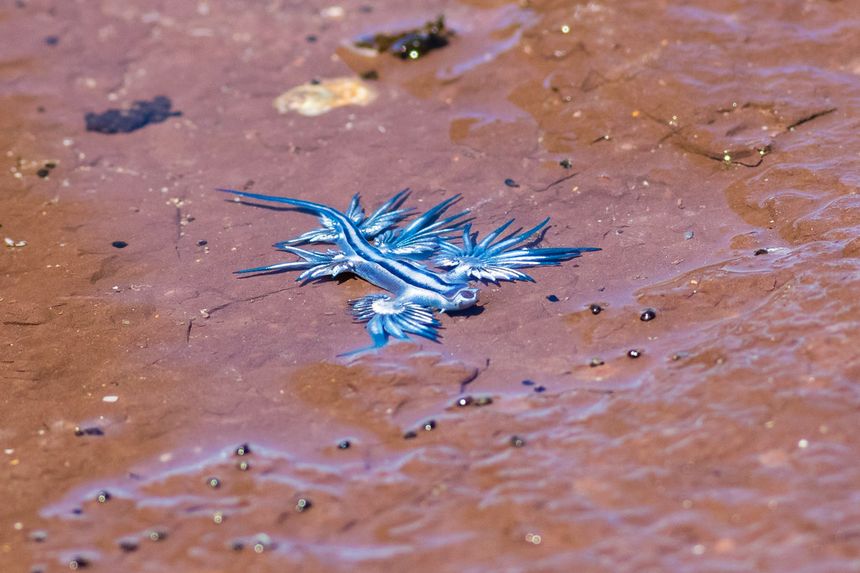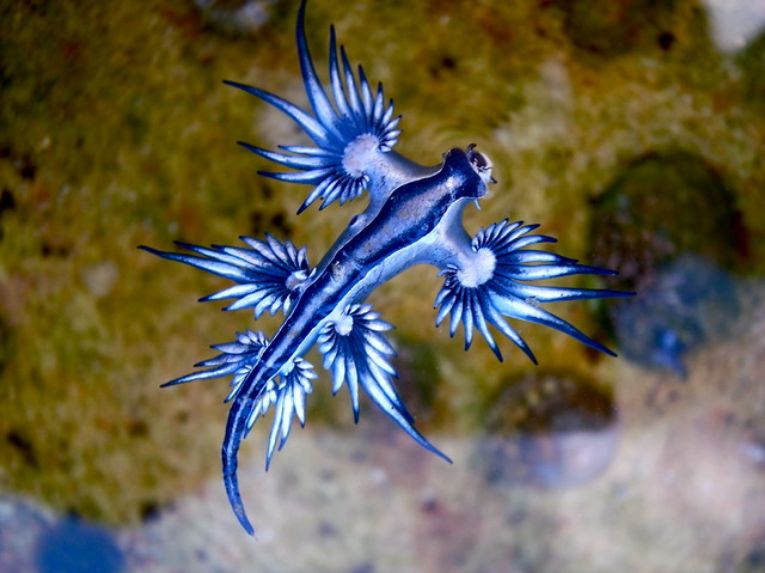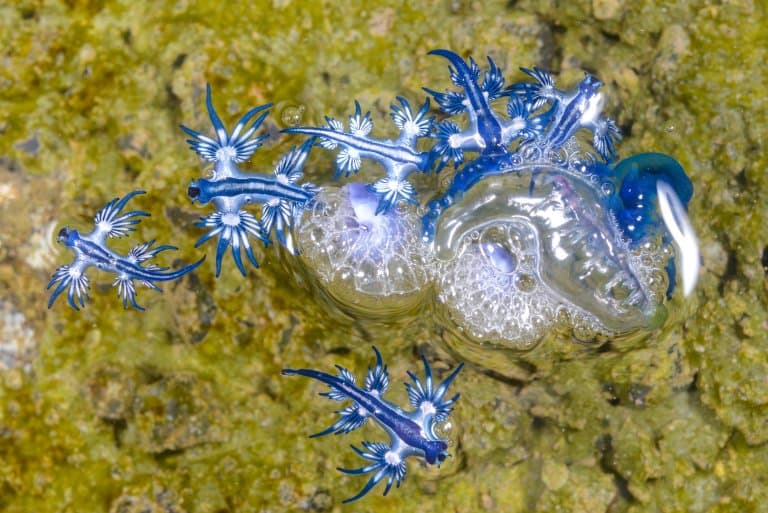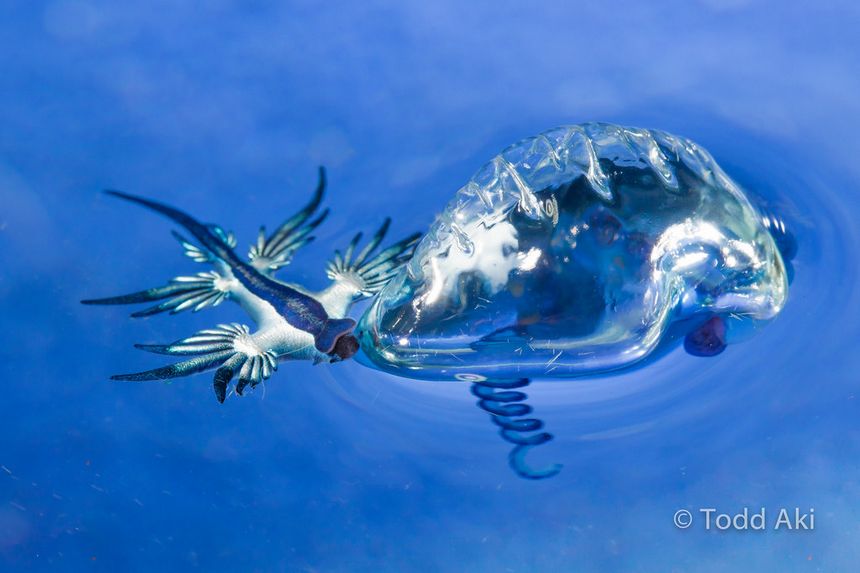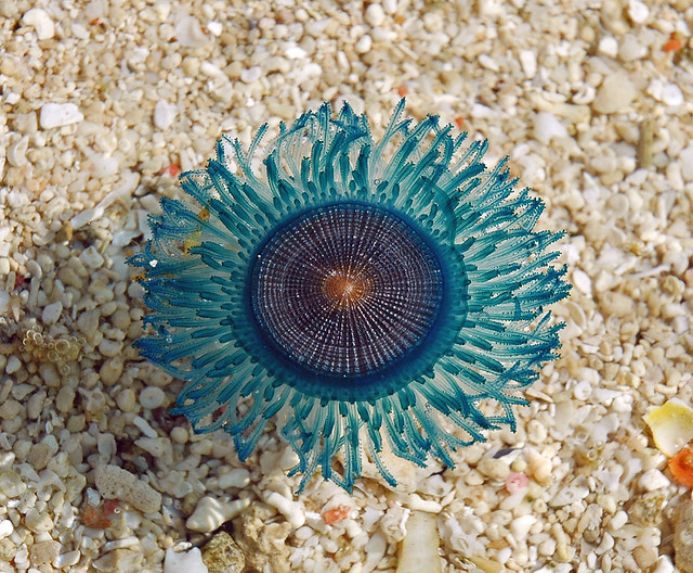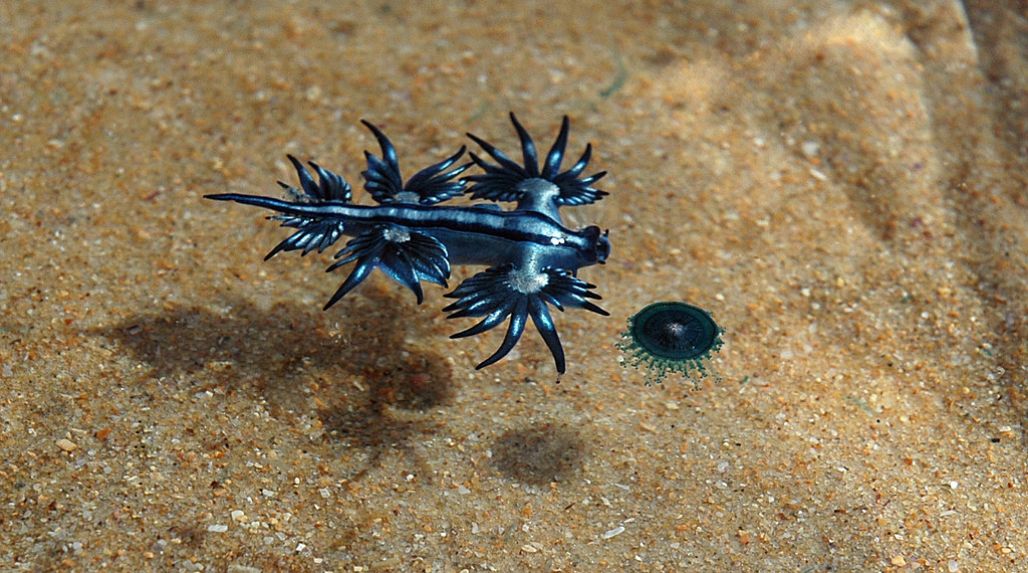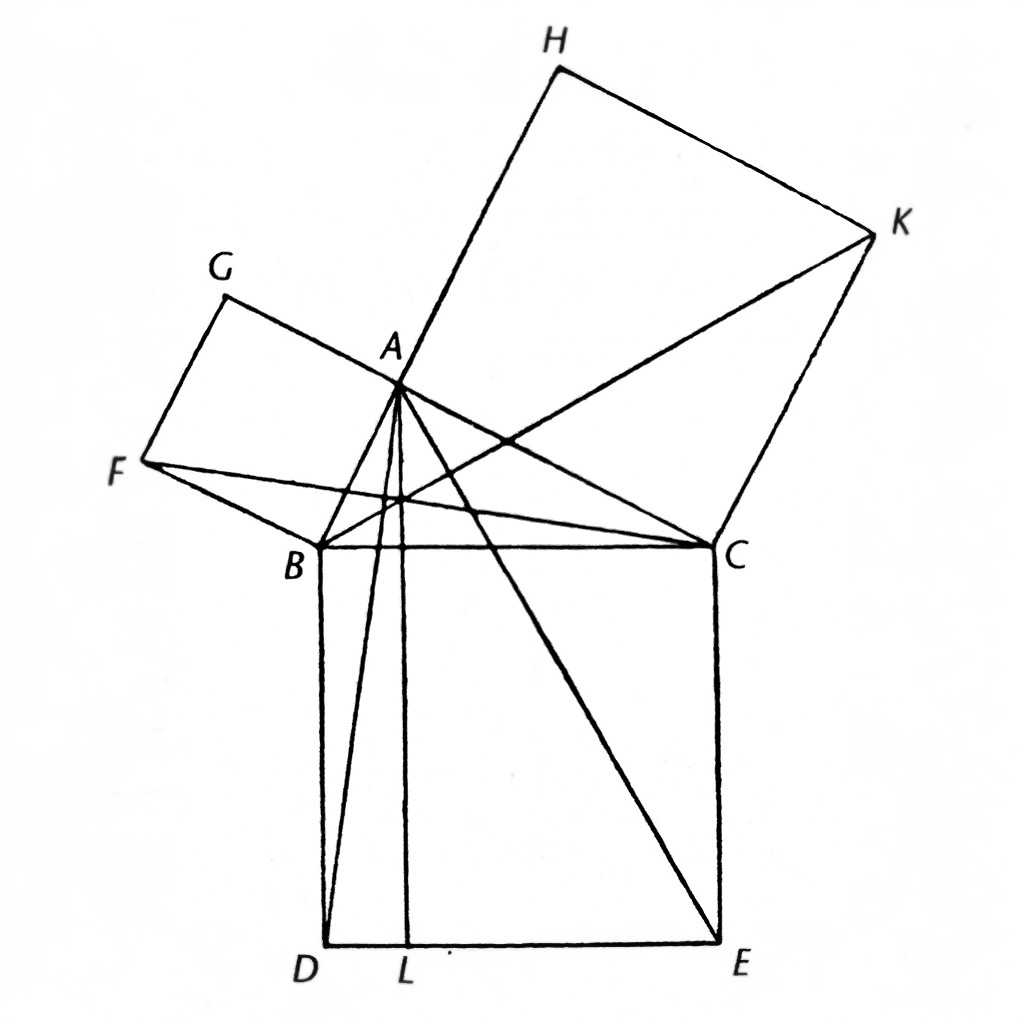Main Photo by paulhypnos
Meet the deeply fabulous Blue Glaucus, or Glaucus atlanticus… aka Blue Dragon, Sea Swallow, Blue Angel, Blue Sea Slug, Blue Ocean Slug and Lizard Nudibranch!
Photo by Atli Arnarson
They free float (upside down) and drift in currents by swallowing air bubbles and storing them in a gas-filled sac to maintain buoyancy!
As they drift in the ocean currents they are vulnerable to being washed up on beaches after storms…
Photo by M Hooper
Photo by csm2mk RTW
They are found in temperate and tropical ocean waters worldwide, specifically the Atlantic, Pacific, and Indian oceans! Although they have been found east and south coasts of South Africa, in European waters, near Mozambique, and off Australia’s east coast.
It’s beautiful colouring help them to camouflage with the ocean and sky!
Their body has a form of coloration known as countershading. The dorsal side (facing downward) is silvery grey, camouflaging it against the seas bright surface. While the ventral area (facing upwards) is dark and pale blue, and its head is covered with dark blue stripes, camouflaging against the seas blue colour!
Photo found here
This combination of colours and the countershading on its body gives it protection from predators above and below!
They grow to around 3cm when mature, and live between 1 month to up to a year!
Always a good idea to handle a poisonous creature!
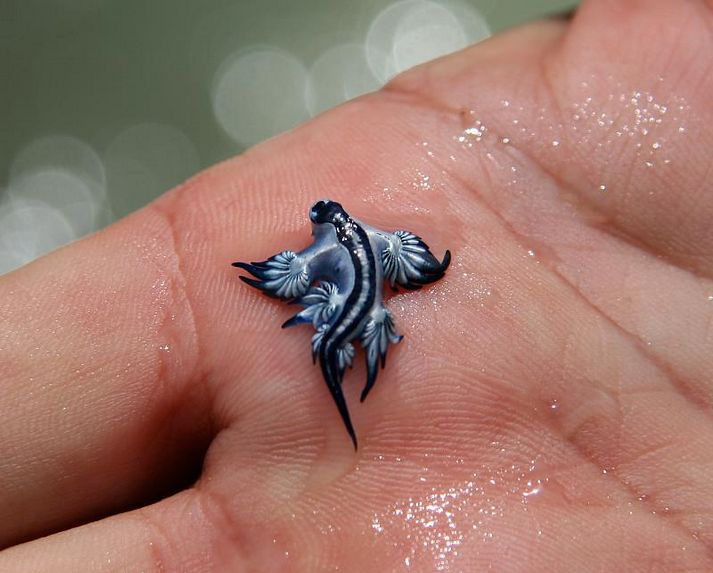
Photo by Zekoo1
Their bodies are flattened, and tapered and sport six appendages that branch out into 84 finger-like cerata.
Photo by Sylke Rohrlach
They are voracious predators, their favoured prey is the Portuguese man o’ war. This looks like a jellyfish, but is actually a cnidarian and has numerous stinging cells (nematocysts) in its tentacles
Portuguese man o’ war (Physalia physalis Photo by Helene Hoffman
They transfer undigested nematocysts (stinging cells) from their prey to the cerata to use them to sting when hunting, or if it feels threatened!
Sexual reproduction could be problematic for a creature with a deadly sting…Fortunately, they have long, curved S-shape bends in their penises to avoid injury!
Photo found here
They lay strings of 12-20 eggs, which they deposit on the carcasses of their prey, or left on any other floating mass they encounter!
Photo by Todd Aki
As well as the Portuguese man o’ war, they will also eat by-the-wind-sailor velella, the Blue Button, and the violet snail… as well as each other!
Porpita porpita- Blue Button Photo by paulhypnos
Photo by paulhypnos
Apart from cannibalism, the Loggerhead Sea Turtle is one of the main predators of the Blue Glaucus.
Photo by J_turner6
Info via American Ocean and Treehugger
Do NOT handle them if you see them despite seeing the photo of one in someone’s hand
Agreed…
[They have] a painful sting and symptoms similar to those of its prey [Portuguese man o’ war]. These include nausea, vomiting, and pain. source
Beautiful, but no touching
Damnit…why does everything beautiful try to kill me…am I ugly?
Probably ugly…Not ugly… it’s just the highly infectious ‘Steve Irwin uncontained enthusiasm’ of wanting to get up close and personal, and finding out whilst you’re doing it that you probably shouldn’t have
I miss Steve
This kills the human
Also: you are usually seeing pictures of their bellies. This is because their bellies have that wonderful blue, while their backs are a more boring silver-grey, so their tummies are more photogenic.
They’re colored this way because they live along the air-water surface tension… but from underneath, so they are always belly-up. The blue belly camouflages them from the air, and makes them look like water; their gray backs camouflage them from beneath, making them look like the air.
They live their lives upside-down, the air is their ground, and when they look “up” it’s toward the ocean depths.
Such wonderful, fascinating creatures! Glaucus atlanticus is probably the most famous, and for a good reason: they look like beautiful little sea angels.
Sea angels that can kill you. Cute, little, blue, murder-angels!!
Beautifully written, much better than my attempt to describe the camouflage from the different viewpoints, thank you! 👍
I loved the post, thank you! Like many people, glaucus atlanticus is my favorite nudibranch, although there are many other wonderful sea slugs.
This hit the front page and now I think there really is a magazine/community for everything just like on Reddit
Hope you subscribed for more nudibrach fun 😀
So tiny

…and stingy! 😈
I think lemmy needs some nudibranch emojis
amazing post
Thank you, check out invertebrates for some of my other posts 👍
My favorite nudibranch! Didn’t know they were cannibals.
Man-o-wars are also fascinating, blurring the line between unicellular and multicellular life.
A lot of nudis seem to be cannibals, I don’t know whether this is from preference or accidentally hoovering up the much smaller ones, probably worth investigating
Also the man o wars definitely need a post of their own, I love how some sea creatures look like individuals but are giant colonies… then again we have slime molds terrestrially and us humans, and we’re a bit like a giant colony of bacteria wearing a person trench coat
I’m glad to have learned a bit about your favourite nudi, they’re stunning creatures in every way (btw I have a special nudi post for Halloween, something fun and not very serious) 😀
I can’t wait!
Don’t get too excited, it may turn out to be crap, but fingers crossed!
deleted by creator
They look so cool.
And the eat blue bottles (Portuguese man of war), even better
and steal the stinging cells from them to make their own attack and defense… pretty hardcore
I think I made this dude in SPORE
Holy shit, the hardest boss in Nova Drift is real?!
Check this shit out, the devs even named it “Glaucus”: https://nova-drift.fandom.com/wiki/Glaucus


